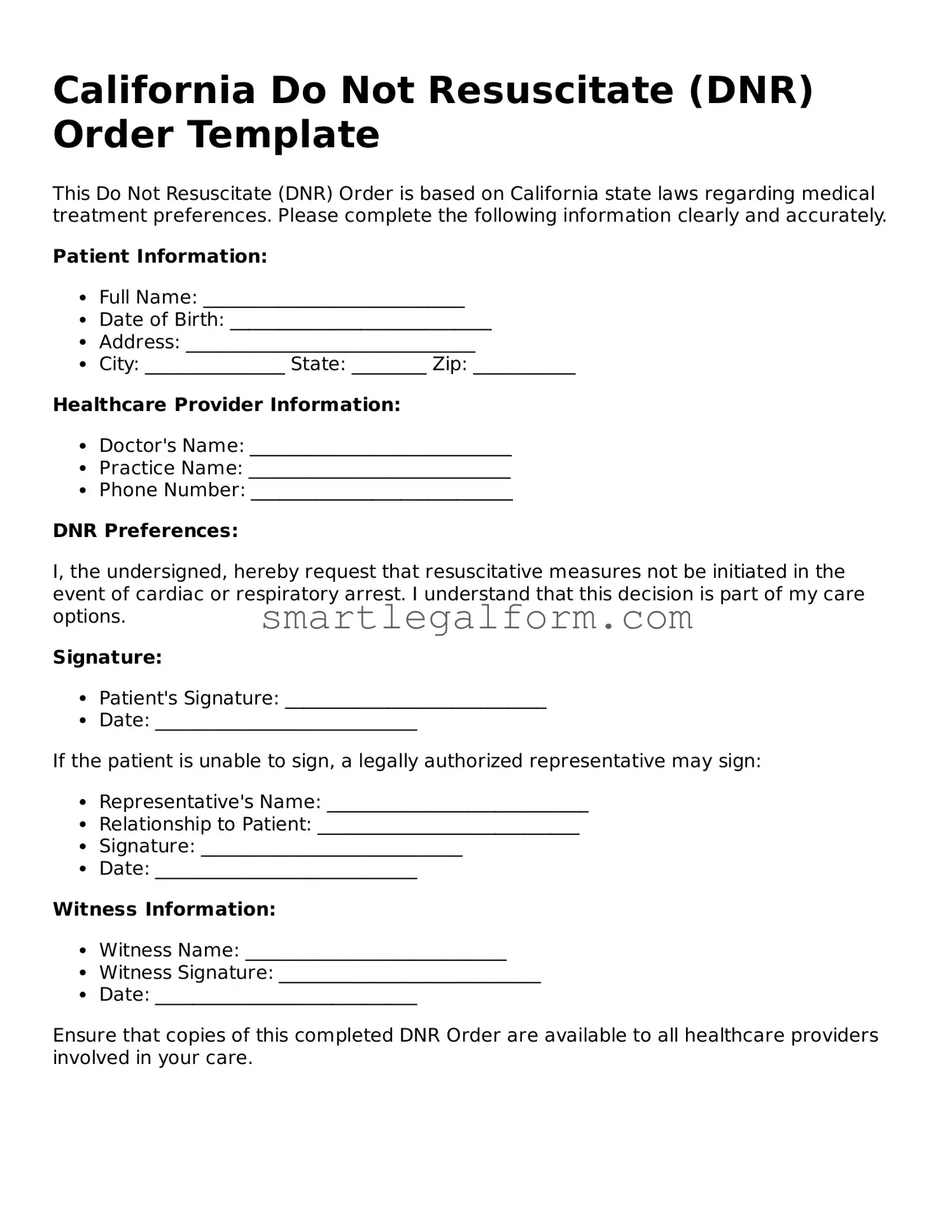Filling out a California Do Not Resuscitate (DNR) Order form can be a daunting task. Many individuals want to ensure their wishes are clearly communicated, but mistakes can lead to confusion or unintended consequences. Here are eight common errors people make when completing this important document.
One frequent mistake is not discussing the DNR order with family members or healthcare providers. Open communication is essential. Without these conversations, loved ones may not understand the reasons behind the decision, leading to potential conflicts during a medical emergency.
Another common error is failing to sign and date the form. A DNR order must be signed by the individual or their authorized representative to be valid. Neglecting this step can render the document ineffective, leaving medical staff unsure of the patient's wishes.
Many people also overlook the importance of specifying the patient's name clearly. Ambiguities can arise if the name is misspelled or unclear. Always ensure that the full legal name is used to avoid any confusion regarding the identity of the person the DNR order applies to.
Some individuals mistakenly believe that a DNR order is a blanket directive for all medical situations. In reality, it only applies to resuscitation efforts. It's crucial to clarify that other medical treatments and interventions may still be desired, despite the DNR status.
Another mistake involves not reviewing the form periodically. Circumstances can change, and so can a person's wishes. Regularly reviewing and updating the DNR order ensures it accurately reflects current preferences.
Additionally, people often forget to provide copies of the DNR order to relevant parties. This includes family members, healthcare proxies, and medical facilities. Without these copies, the order may not be honored when needed most.
Some individuals may also fail to understand the legal implications of the DNR order. It's essential to know that this document has specific legal requirements in California. Consulting with a legal professional or healthcare provider can help clarify these aspects.
Lastly, a common error is not seeking assistance when needed. The DNR form can be confusing, and seeking help from a healthcare provider or legal expert can ensure that it is filled out correctly. Taking the time to understand the process can prevent future complications.
